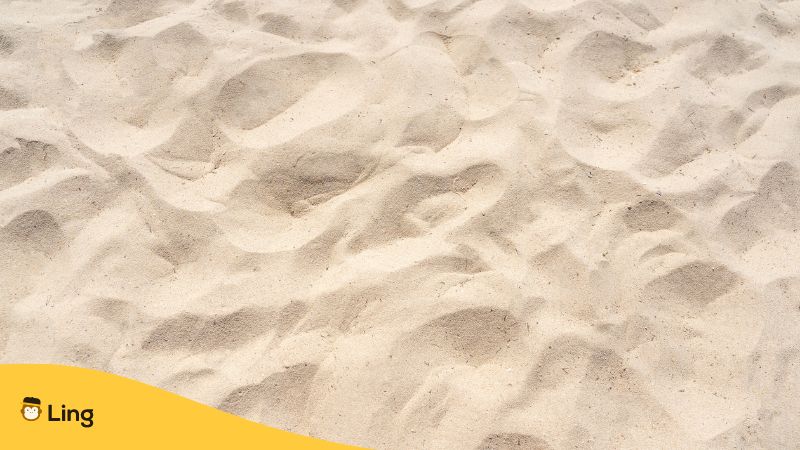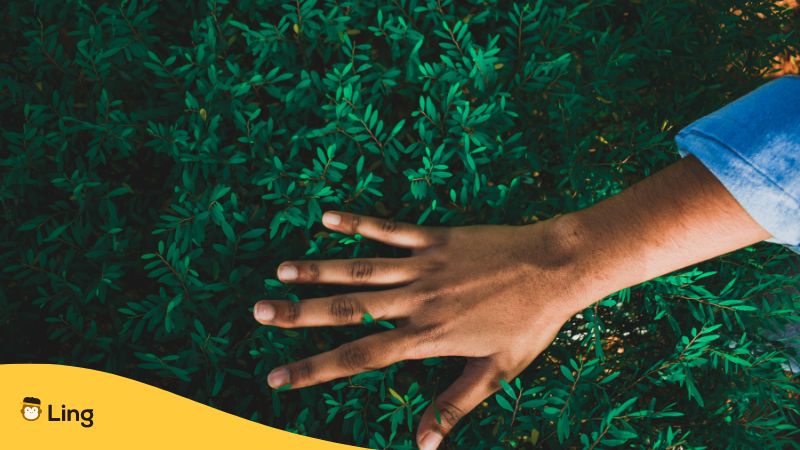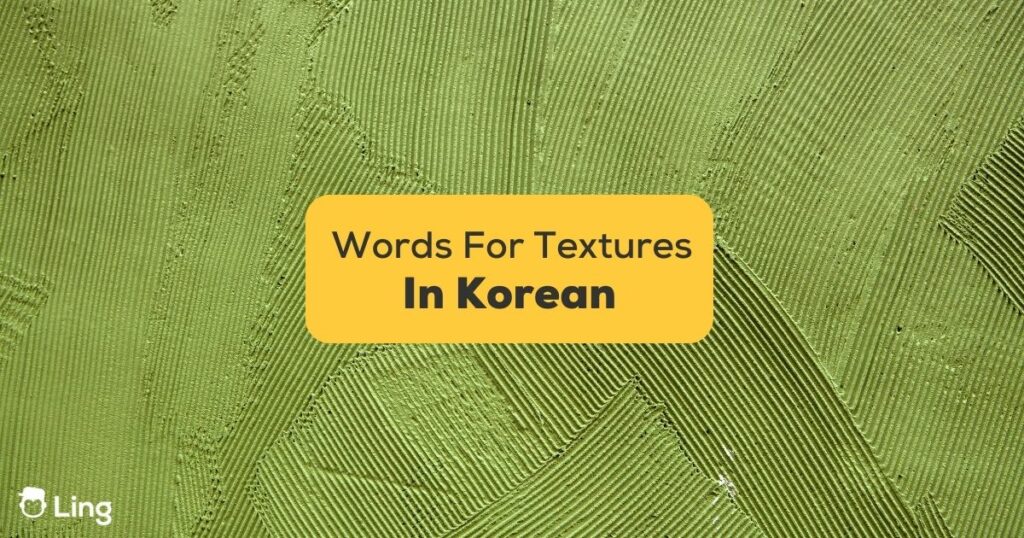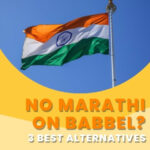Structured sentences? Check! Grammar on point? Double-check! But guess what’s the secret ingredient to make your language skills feel as 윤기있어요 (Yun-gi-iss-eo-yo, meaning ‘glossy’ or ‘smooth’) as your hair after a nourishing hair mask? It’s the words for textures, of course! In this article, we’ll go over all the basic Korean words for textures so that you can describe anything like a total native speaker. Ready to learn? Let’s begin!
The coarse gravel crunching underfoot, the buttery caress of the sunlight, the crumbly wispiness of cherry blossom, or even the crisp crunch of your favorite granola bar – every texture sings a symphony of sensations only you can hear. So if you’re learning the Korean language from scratch, we highly recommend mastering this set of words because they are pretty handy when expressing something with a bit more detail.

What Is “Texture” In Korean Language?
In Korean, “texture” translates directly to “질감” (Jil-gam), while “textures” translate to “질감들” (Jil-gam-deul). But it’s more than a mere word—it’s a sensory expedition waiting to be discovered.
When it comes to the Korean language, ‘질감’ is like a wandering traveler. It sneaks in everywhere, adding subtle levels of depth, flavor, and color to your communication palette. You’ll find 질감 (texture) lurking in the way Koreans describe their food—whether it’s the 감칠맛나는 (gam-chil-mash-na-neun, meaning ‘savory’) bulgogi or the rich gooiness of 치즈 떡볶이 (cheese tteok-bokki, Korean spicy rice cakes). Your Korean skincare routine wasn’t left out either; think of the 촉촉한 (chok chok han, meaning ‘moist’) sensation of a freshly applied sheet mask on your skin.
But why is understanding ‘질감’ so pivotal when learning the Korean language?
- Understanding People Better: The Korean language, and by extension, its texture-imbued lexicon, serves as the epidermis of Korean culture— the surface where you can touch and read rich stories of a beautiful heritage. By identifying and learning these texture words, you’re essentially tuning in to the finer details of personal narratives and experiences shared in Korean society.
- Creating Vivid Dialogues: 딱딱해진 (ttak-ttak-hae-jin, meaning ‘pebbled’) streets, 부드러운 (bu-deu-reo-woon, meaning ‘smooth’) silk Hanboks, 촉촉한 (chok chok han, meaning ‘moist’) Kimchi — by understanding and using these words, you can paint your conversations with a rich, textured finish. It’s like swapping a bland monochrome conversation for a smashing IMAX surround sound experience.
- Deepening Language Proficiency: Delving into 질감 (texture words), you’ll add another layer to your language proficiency, taking you from a casual paddler to an expert diver in the deep seas of the Korean language. As you master textures, you’ll find yourself thinking, speaking, and even dreaming in a more authentic, 한국적인 (han-guk-jeo-gin, meaning ‘Korean-like’) way.
Embracing 질감 in your Korean learning adventure is like touching the soul of the language, opening a doorway to become not just a visitor but an inhabitant of its cultural landscape. So leap in, and let’s start exploring together!

Common Korean Words For Textures
In the Korean language, each texture word emanates an intimate dialogue with the objects we encounter. This is more than just a linguistic exchange; it’s a cultural practice — deeply woven into the everyday life of the native Koreans. The local vocabulary carries an array of words to describe the full spectrum of textures- from the fineness of silk and the creamy texture of traditional sauces to the rough surface of an age-old artifact.
Are you eager to elevate your 한국어 (han-guk-eo, meaning ‘Korean language’) skills and sail through conversations like a 멋진 (meot-jin, meaning ‘stylish’) K-drama protagonist? Then hop on this linguistic roller-coaster as we explore some common Korean words for textures.
부드러운 (Bu-deu-reo-woon) – Smooth / Soft
Lush green fields of 부드러운 grass tickle your mind as you dream of the softest, most tender 떡 (tteok, a Korean rice cake). 부드러운 is a versatile texture word with endless possibilities.
고소한 (Go-so-han) – Nutty / Rich
Feeling peckish for a 고소한 snack? Relish every bite of an 아몬드 가래떡 (a-mon-deu ga-rae-tteok, almond honey rice cake) as you uncover the iconic texture that sends your tastebuds on a happy dance.
촉촉한 (Chok chok han) – Moist / Damp
Yearning for a 촉촉한 sensation? Watch as the morning dew glistens on the 초록색 (cho-rok-saek, meaning ‘green’) leaves after a 서해 (west sea) rainstorm, and lose yourself in this wonderfully moist texture.
퍽퍽한 (Ppeok ppeok han) – Dry
Sometimes, a cracking deep-in-the-desert vibe calls for the 퍽퍽한 texture. Think about the 한낮 열기 (han-nat yeol-gi, meaning ‘midday heat’) drying out your 코끝 (ko-kkeut, meaning ‘tip of the nose’) surrounded by 침대 (chim-dae, meaning ‘bed’) full of crisp 퍽퍽한 카포티 (Ka-po-ti, meaning ‘capoti’ – a traditional Korean straw mattress).
단단한 (Dan-dan-han) – Hard / Solid
Ever bitten into a rock-hard 딸기 (ttal-gi, meaning ‘strawberry’) when you were expecting a burst of juicy sweetness? That’s when you would describe the texture as 단단한. You might often hear this word slip into conversations about 지붕 (ji-bung, meaning ‘roofs’) or 서양 궤짝 (seoyang gwe-jjak, meaning ‘western trunk / chest’) as well.
매끄러운 (Mae-kkeu-reo-woon) – Sleek / Glossy
A word for when the surface is as smooth as 버터 (beo-teo, meaning ‘butter’) and almost reflective, as in freshly polished 신발 (shin-bal, meaning ‘shoes’). Remember that stylish 한복 (han-bok, Korean traditional dress) with the 매끄러운 silk surface? An absolute feast for the eyes!
끈적끈적한 (Kkeun-jeok-kkeun-jeok-han) – Sticky
Welcome to every kid’s (and well, adults’) candy-coated dream! 끈적끈적한 recalls the irresistible yumminess of melted 초콜릿 (cho-co-lit, meaning ‘chocolate’) or that enthusiastic 로션 (ro-shon, meaning ‘lotion’) that seems too attached to your skin. Note it down, use it, and feel the word stick to your Korean language expertise!
까슬까슬한 (Kka-seul-kka-seul-han) – Scratchy
And now to the less pleasant sensations. Have you ever worn a 까슬까슬한 울 스웨터 (wool sweater)? I bet you won’t forget to wear a tee underneath next time. The word aptly describes the sensation of an itchy, scaly, or rough surface.
Learn The Korean Language With Ling
Congratulations, knowledge-seekers, you’ve made it to the end of our venture into Korea’s textured vocabulary. Now, the real challenge begins: it’s your turn to step into the exciting world of 한글 (Hangul) and 모험 (mo-heom, meaning ‘adventure’)!
If you’re eager to learn Korean, fear not—a solution lies just at your fingertips in the form of Ling! Combining both education and entertainment, this trusty app will beam you straight into the heart of the 한국어 어휘 (hangug-eo eo-hwi, meaning ‘Korean vocabulary’)!
Ling will be your ever-dependable language companion, showering you with intriguing lessons, interactive quizzes, and a clear, concise approach to mastering the fascinating Korean language. Wave goodbye to monotony and embrace a stimulating learning experience (plot twist: with a touch of humor!) that keeps you engaged and hooked.
So, what are you waiting for? Whether you’re a 뾰로롱 한국의 진수도 교 (ppuero-rong han-guk-ui jinsu-do gyo, meaning ‘budding Korean connoisseur’) or a 한자의 여행자_ (hanja-ui yeohaengja, meaning ‘seasoned traveler of Hangul’), embark on the journey with Ling today! Download it now from the App Store or Play Store to get started!
































































